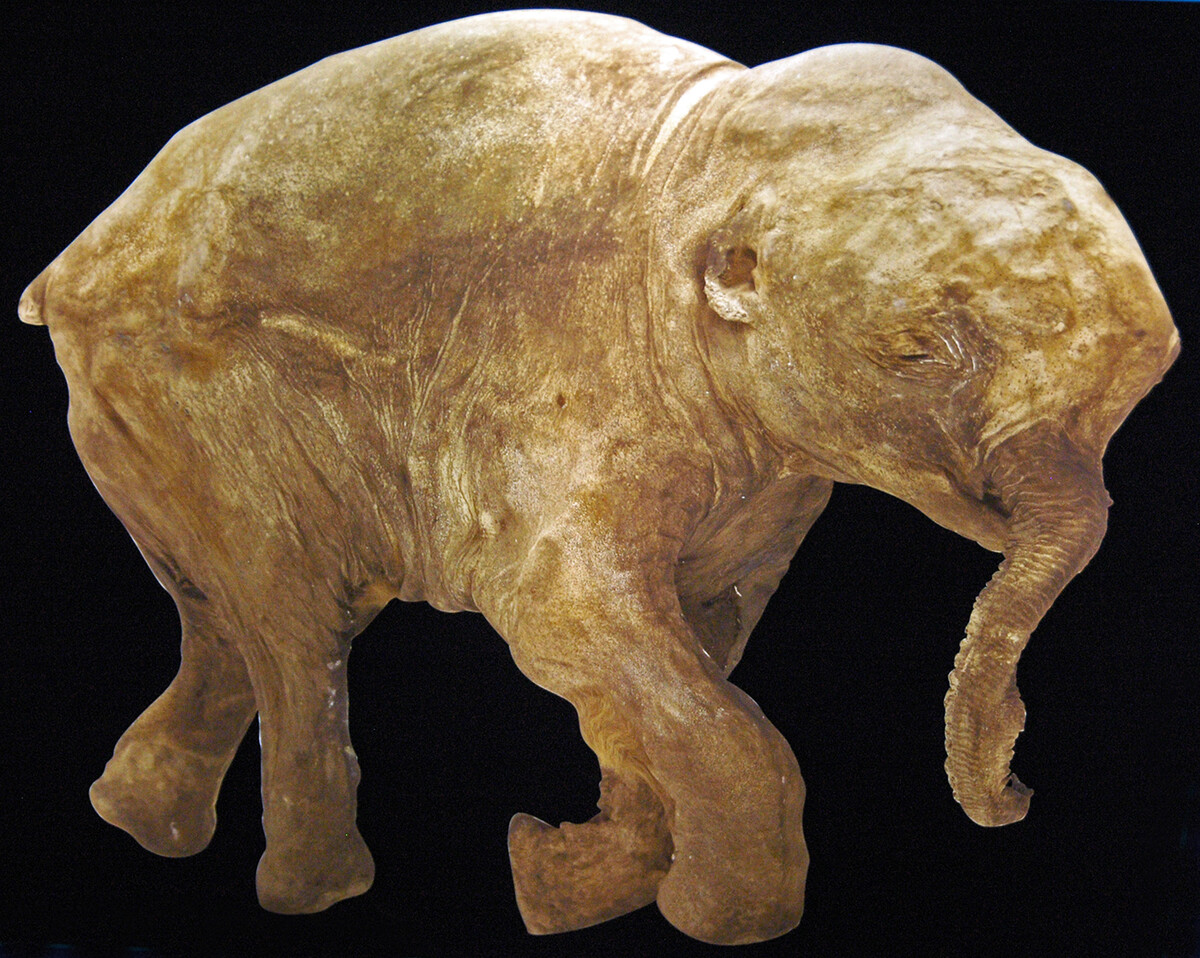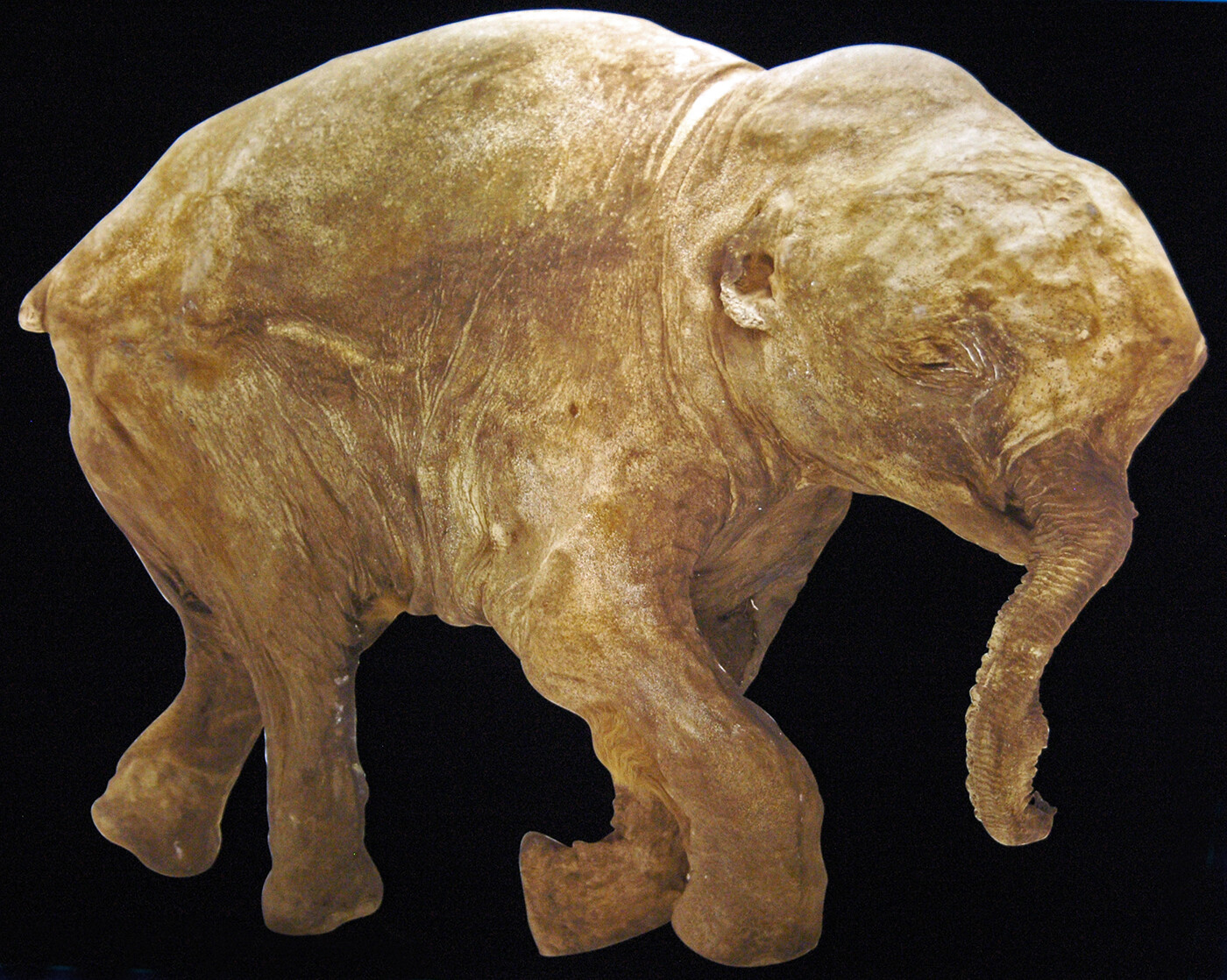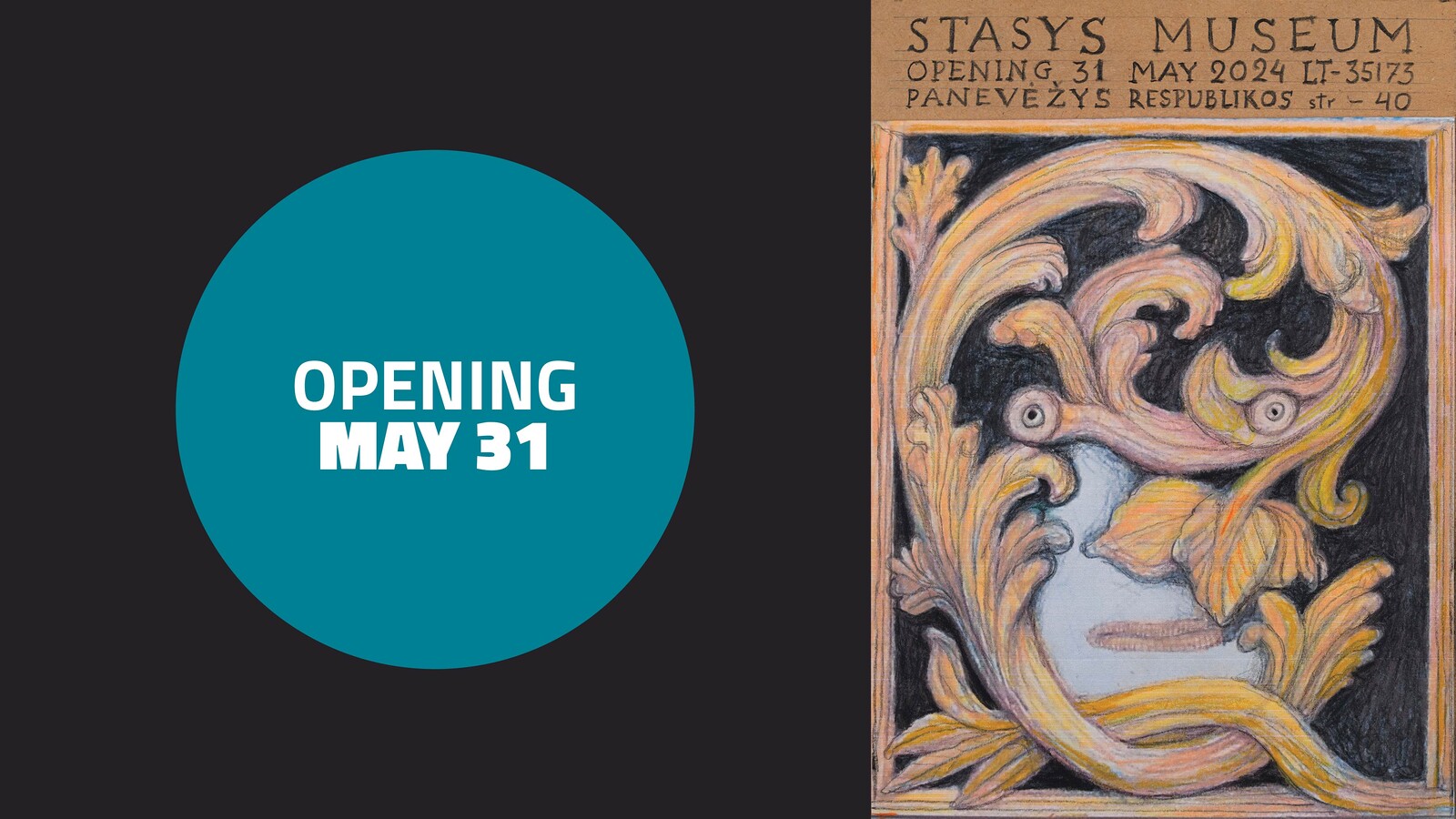
Besanosaurus leptorhynchus fossil, detail of the skull. Photograph: G. Bindellini.
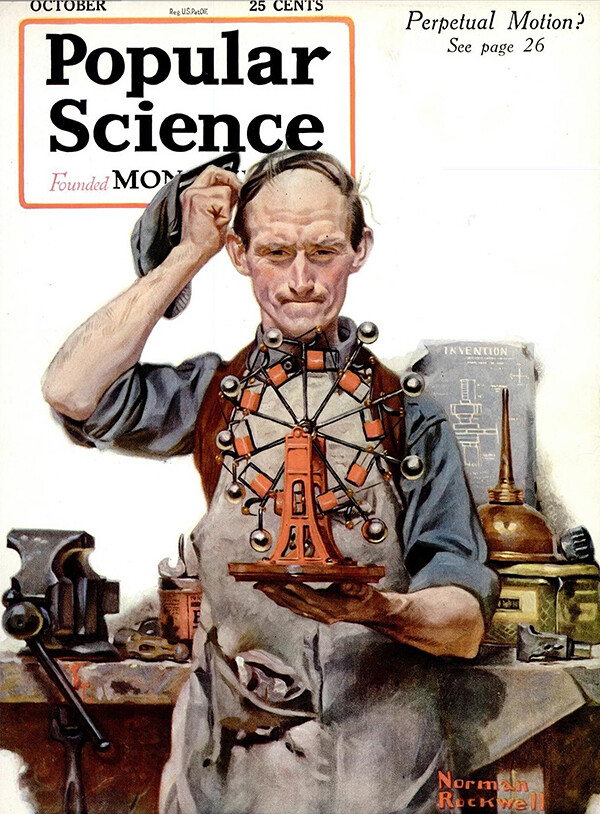
October 1920 issue of Popular Science on perpetual motion. License: public domain.
Besanosaurus leptorhynchus fossil, detail of the skull. Photograph: G. Bindellini.
Meandering down a sunlit hall of mineral “specimens” at the Milan Natural History Museum, I zigzag my way around the corner to the Besanosauro fossil. Named for a small town an hour outside the city, this curvaceous marine reptile, discovered in the early 1990s, was a dolphin-like being that lived some 250 million years ago in what was once a sea mere kilometres from where I now stand. Taking up an entire wall, its arched back and filigree tail are sealed in a fossilized dance that took millions of years of chance, sedimentation, and distributed nonhuman action to achieve. This shale pirouette reflects complex multispecies entanglements recorded in a single lithographic snapshot. Besanosauro is the deadest of dead, yet it appears to be in perpetual motion on the stone.


A US soldier stands guard near a burning oil well in the Rumaila oil field in Iraq, April 2003. License: public domain.
Walking past a few more hushed museum portals, my sandals echoing along the sleek marble floors, clusters of long-dead starfish and gigantic clams rise out of the ancient rock like blossoms opening to the sky. How can they be gone when they are right here before me, almost clamoring and springing from the stone? What does it mean to be fossilized, to be consigned to the fossil record, but to be preserved in time and space in all of one’s deadness? Zoe Todd writes of fossils from a Métis feminist lens. She explains that they are ancestors who are often turned into “artifacts” by science for purposes of extraction, weaponization, or capitalist fossil-fuel interests. She notes: “In western ontologies, artifacts are things (no longer a ‘who’) whose kinship has been severed: their people can no longer speak for or with them.”1 This suggests a need to shift towards finding more sustained, ongoing connections with ancient ancestors. For the purposes of this essay, I will focus on the possibilities provided by viruses and junk DNA, which are parts of ourselves that represent a continuous interaction across species and over time. This essay engages with the complexities, possibilities, and extended relations with viral junk in our DNA, bringing my perspective as an interdisciplinary waste scholar to bear on that which is left behind in the wake of viral exposures.


Contraction crack polygons releasing acid on Arctic sediment. License: CC BY-SA 3.0.
DNA can leave traces of the past. As the geneticist Edward Chuong suggests: “In the human genome we can see traces of these [viral] invasions everywhere, like a fossil record of infections.”2 Bits and bobs from past infections, along with parasites and other material, remain in our genomes for millennia, acting as a fossil record of sorts in our bodies. Like the fossils Todd speaks of, DNA fossil records of past viral infections likewise have lessons to convey. They not only show how ancient viruses might remain with us, as us; their residual haunting also unravels what has long been presumed about viruses: that they are supposedly fixed, solely pathogenic particles with unchanging (rather than continuously evolving) impacts and roles in the genome.
If the fossil record is static, dead, and biologically set in stone, the word
“fossil” falls far short as we try to grapple with the pluripotent capacities of viral genetic elements in our cells. Perhaps if one understands the fossil record as an evolutionary glimpse and pushes against Western scientific notions of fossils that assume “common ancestors without reciprocity,” as Todd insists, then we might understand viral fossils as lively entities in continuous motion.3 The fossil elements in our genome are actually a mishmash of viral remnants and noncoding genetic material. They are what remains from past viral infections, what can be reanimated to become “jumping genes” that are mobile elements in our genome. The presence of these viral elements in us is an opportunity to fundamentally rethink what a virus actually “is.”
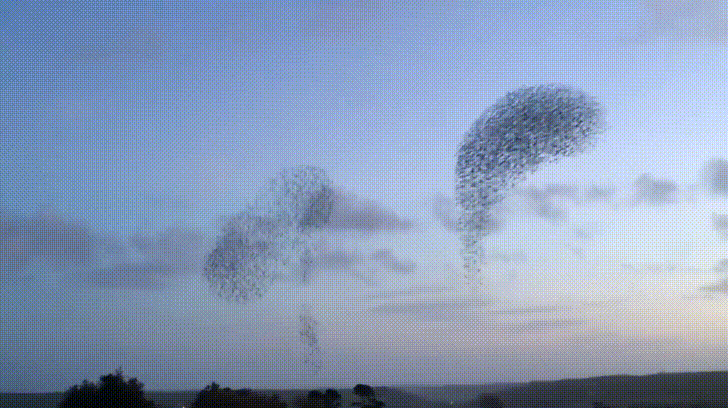
Starlings outsmart peregrine falcon with murmuration manoeuvres

Bee swarm on a tree. License: GFDL 1.2.
Starlings outsmart peregrine falcon with murmuration manoeuvres
In the words of Eben Kirksey, “Viruses are usually only noticed when something goes wrong.”4 Viruses, the most diverse life-forms in the world, are pathologized despite being largely unknown and vastly understudied.5 Viruses are also “good, bad and pluripotent.”6 They are processes as much as biological forces.7 Viruses are best understood as swarms, clouds, and ever-mutating ecological actors within specific contexts rather than singular things or objects.8 They are “world-forming and world-destroying.”9
The viruses that are latent in our genomes are not static fossils, as some of the primary literature in virology might imply. Instead, they are better understood with another phrase that has made it into popular parlance: “junk DNA.” Viruses make up a large portion of junk DNA, but what is that exactly? Junk DNA is the so-called “dark matter”10 of the genome: the sequence of snippets, viral remnants, molecular bits, pieces, and forgotten blasted microbial leftovers that stay in bodies after viral exposures and infections. This genetic junk exceeds the boundaries of particular cells and can even move beyond our own bodily existence. By this I mean junk DNA can be mobile within our bodies in our lifetimes and remain into epigenetic and evolutionary futures far removed from now. This particular DNA does not code for proteins and could be considered “extra,” sometimes viral leftover material.
Junk DNA makes up 98–99 percent of the human genome. Many biologists would agree that this material has long been taken for granted, as it “seems like pointless bloat,” as one journalist put it.11 Many scientists understand this junk as “DNA that is of no selective value to the organism that has it,” according to Miles Wilkinson, a geneticist at UC San Diego. The concept of genetic junk has been hotly debated since the 1970s, when it was first coined by Susumu Ohno,12 and then again as debates shifted and evolved towards junk DNA’s perhaps not-so-junky status after all. This junk/not-junk valuation, which has captured the attention of popular media, is too simple. The term figures into discussions of evolutionary definitions of function, as well as into explorations of the role of transposable elements.
For instance, Wilkinson takes issue with the semantics of junk: “A problem with the term junk is that is what something is and we’ve defined it and we’re done.” He suggests this presumption of junkiness stems from historical scientific debate between the 1980s and the early 2000s, in which non-coding DNA was thought to be selfishly replicating itself with no other functional impacts.13 This is changing as scientists affirm the sheer extent to which junk DNA impacts cellular existence quite pluripotently, from immune function to gene expression and even mutation. This ongoing and swiftly evolving debate over presumed value, function, and evolutionary meaning-making is important to my analysis.
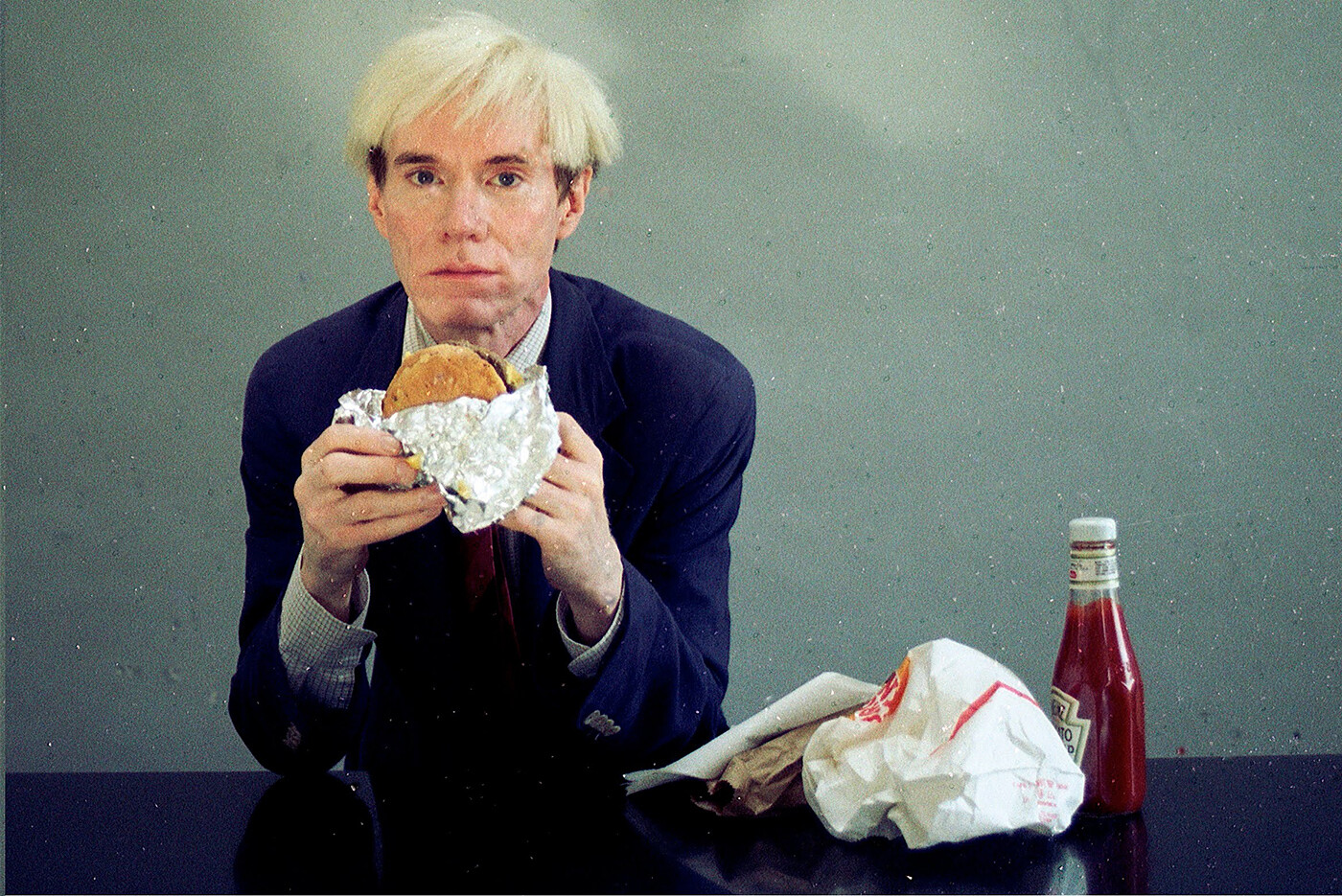

Jorgen Leth, Andy Warhol Eating A Hamburger, from the series “66 Scenes from America,” 1981.
Viruses have the capacity to reassemble. Junk DNA is spectral; it is composed of remnants of undead viruses that might be understood as elements making up a “hauntology of waste”14 in our cells. In the world of discard and waste, junk is at once rich and imprecise: slippery, subjective, hard to pin down, and lacking in data or measurement. As a child I played on the skeletons of old cars dumped in an abandoned lot just beyond the legal confines of the city limits. I raked my knuckles over their gritty exteriors, scraped my knees on the dangerously rusted edges of their rooftops and door handles. To the person who hoarded these cars they were investments, an inheritance even, easily scrapped and traded for cash: not junk at all. Their worth was not at all tied to their capacity to run, to their mechanistic function. Every day I worked in my family’s auction business, in which we carried, loaded, grappled with, sweat over, and ultimately bought our groceries with the used bits and bobs that made up the universe of other people’s lives. Something in this term “junk” feels familiar to me, sometimes full of possibility. That which has been thrown away, forgotten, ignored, deemed useless and then found anew is a cycle that made me—it paid the bills, fed, and clothed me.
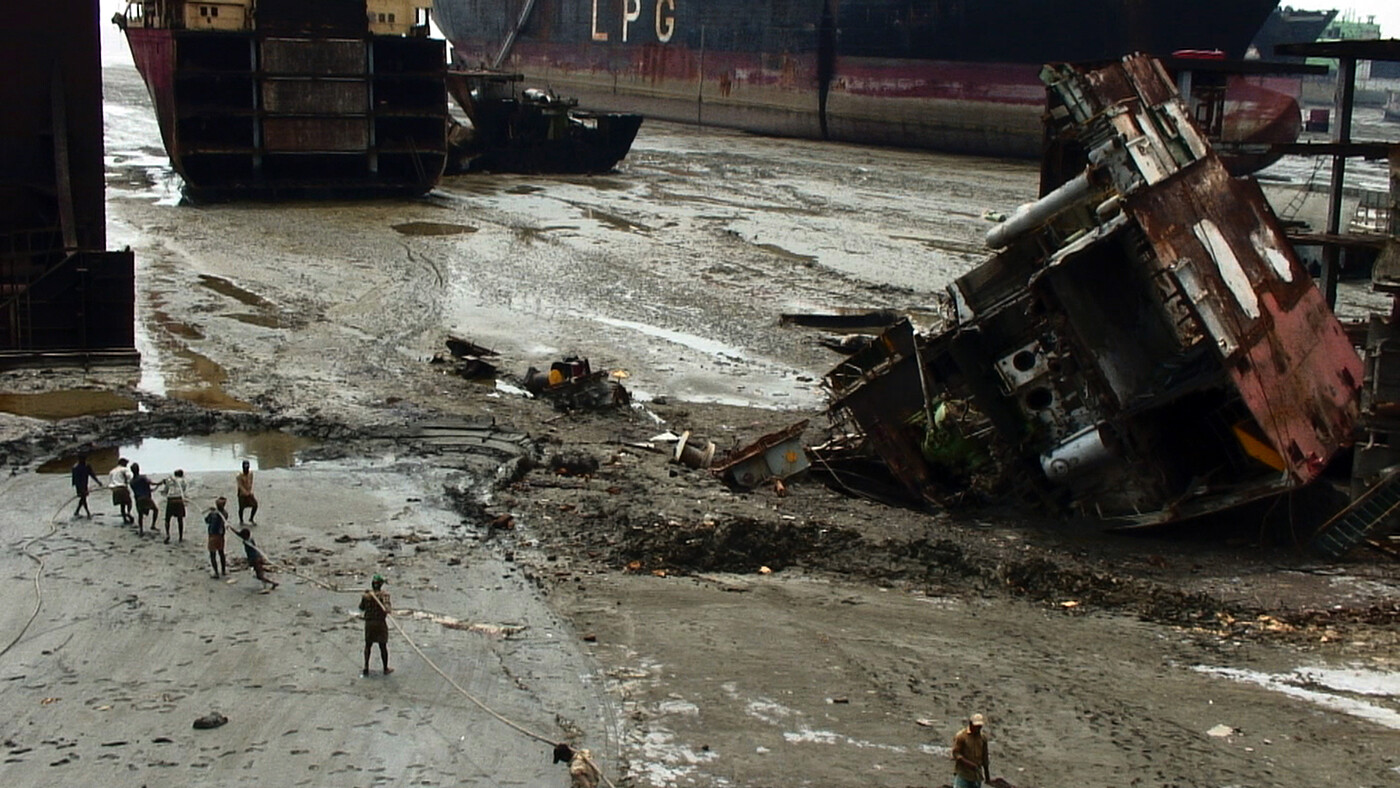
Jafrabad Chittagong shipbreaking. License: CC BY-SA 2.0.
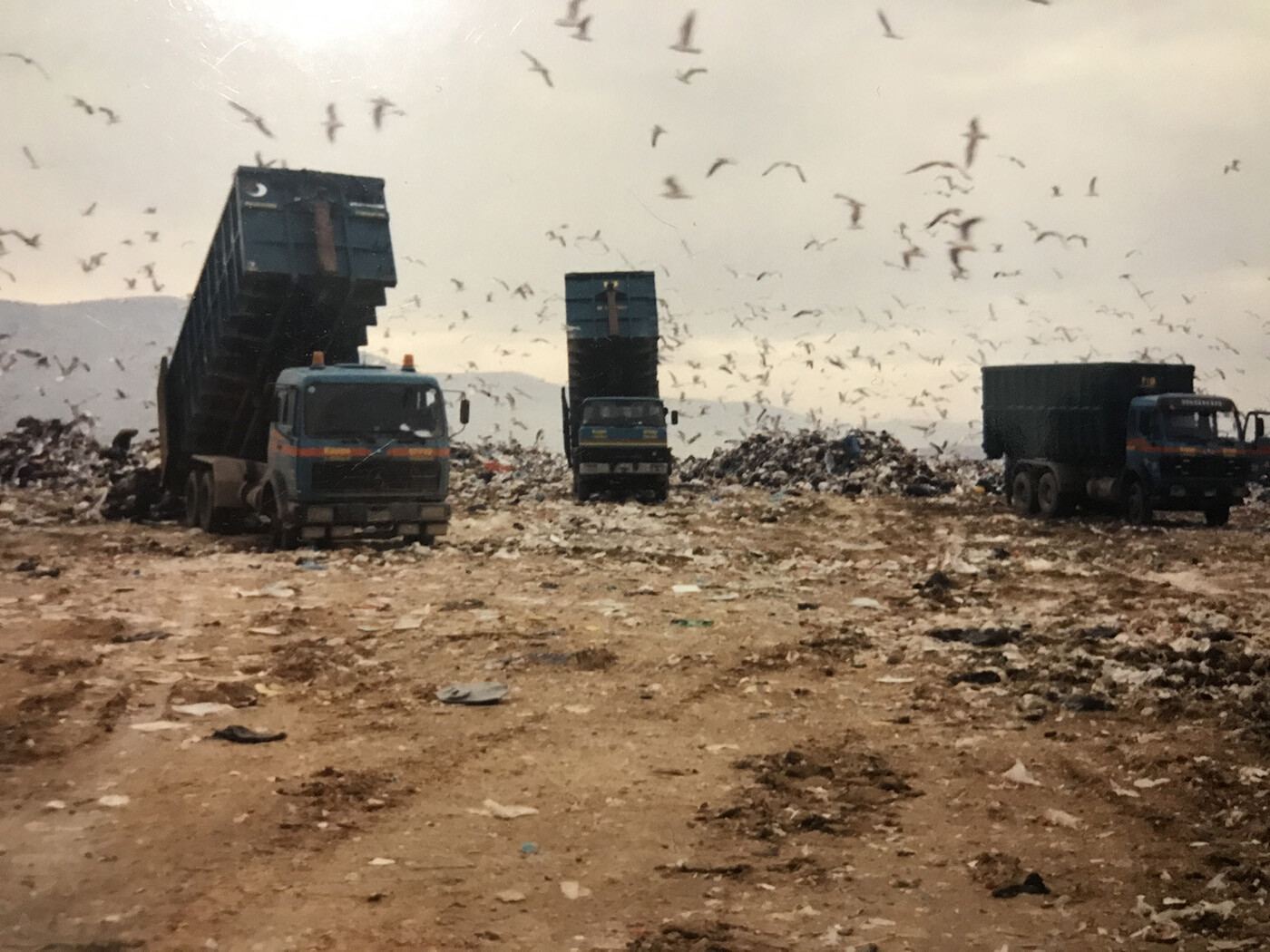
Waste disposal in Athens, Greece. License: CC BY-SA 4.0
Jafrabad Chittagong shipbreaking. License: CC BY-SA 2.0.
Similarly, debates and expanding understandings of junk DNA reveal an evolving revaluation and interpretation of the very concept of “junk.” However, the (perhaps over)emphasis on function-as-value underscores that it is often only with evidence of specific biological function that the subjective notion of “junk” is reconsidered. This too is shortsighted given how quickly scientific knowledge evolves, or how imprecise the notion of function proves to be. At the same time, caution is needed concerning the growing, potentially extractive, genetics-based curatives for junk DNA–impacted diseases that are as environmental and social as they are biological. Both forms of overemphasis (function-as-value and targeted genomics-based cures) are telling of a limited view of these powerful and prolonged relations we have with our viral junk, which makes up much more of our DNA than previously assumed. My question is not solely “What does the body make of what remains?” Nor is it “Why is genomic junk important after all?” Molecular biologists are already beginning to articulate these questions. What I want to ask in this essay is: “What does the erasure or ignorance of junk suggest about the stories we tell ourselves concerning viral exposures of the past, present, and future? What insights from the field of discard studies prove useful for living with the ghosts of viral exposures?” Junk is very rarely ever junk, as waste scholars know. Entities that are rescued from the discard pile inhabit social systems that value materials with unknown, unexamined, undervalued, or misunderstood properties. Viral junk can be embraced as potentially evolutionarily connective or hopeful, rather than always already pathogenic, as viruses are often presumed to be. In a globe ravaged by pandemic, heavy with the economic impacts, grief, and absences of those taken too soon by a virus, it is difficult to reckon with viral junk in an affirmative register. Is it possible to think with and across junk DNA amidst so much loss? What does junk DNA’s comeback from its earlier relegation to the dust heap reveal about the changing, rather than presumed static, nature of the genome?
In scientific jargon, “jumping genes” are known as transposable elements, or DNA sequences that move or “jump” around the genome, comprising the vast majority of so-called junk DNA.15 They have varying roles as benign, helpful, or parasitic and disease-inducing agents.16 Therefore, they raise important questions about why they may reanimate and reassemble in the body in timescales even beyond single lifespans. Some of the latest genetic scholarship on jumping genes also argues that what was once seen as junk is perhaps central to understanding the wildly diverse physiological responses and uneven suffering that people experience in contracting SARS-CoV-2.17 While one needs to be critical of perpetuating biologically deterministic arguments that fail to acknowledge how biological mechanisms are always-already coconstituted within the context of society, culture, industry, ecology, and politics, the point here about junk DNA is that much of it is not inert within the genome (as the idea of a viral fossil implies), nor is it proving to be all that junky after all. This reconsideration occurs as scientific knowledge grows in understanding the ongoing impacts of human endogenous retroviruses, which make up some 8 percent of the genome. These viruses are described as “relics of ancient infections that affected the primates’ germ line [over] the last 100 million years.”18
Drawing upon scholarship from discard studies—defined as a field that does not stop at inquiry into specific waste objects and materials, but extends to the dynamics of power that surround them, to “the wider systems of waste and wasting”19— two particular insights stand out in musing about viral junk. The first has to do with the field’s emphasis on the interwoven dynamics of time, power, and becoming. Many forms of exposure to pollutants prove to be elements that persist and that we must live with over lifetimes. Exposures to industrial chemical waste have changed our bodies and epigenetically color our evolutionary futures—what Michelle Murphy describes as states of “alterlife” beyond exposures that become “a part of human living-being [and that have] joined the molecular fabric of our bodies.”20 Viruses, too, are pluripotent entities that remain in bodies post-exposure, weaving a form of cross-species alterlife we must live with.
Lisa Doeland’s concept of a “hauntology of waste” frames an understanding of waste as something ever-unruly and unmanageable and that becomes us:
If we want to learn to live with waste, we have to learn to not [close] our habitats off but share them with the other things―both living and non-living―that are already there. [Even] if we wanted to, we cannot keep our distance from waste―waste-things are hard to keep at bay. Both the waste that is landfilled (but leaks), that is incinerated (but leaves toxic ash and dioxins) and that is anaerobically digested (but not all of it) leaves remainders.21
Waste’s hauntology of bodies as ecosystems, and the alterlives created in the wake of harmful or undesirable exposures, help to illuminate viral junk and its pluripotent capacities within genomes. It is a reminder that microbes, viruses included, are us. Ancient viral exposures remaining in the genome may play a continued role in gene expression or viral memory.
Power is at play in dynamics of viral exposure, just as with the chemical exposures that inform Murphy’s alterlives and Doeland’s hauntology. Just look to our present global state of affairs, in which for a privileged few, the pandemic may be managed with a host of biotechnological tools, policy, and individual purchasing power. For many more, the pandemic rages on ad nauseum as a result of the intersecting structural violence of class, race, gender, and geopolitical inequalities, or as a result of the necropolitics of vaccine apartheid. Yet, power here also plays out in historically limited and continuously expanding scientific knowledge, which has ascribed value (or valuelessness) to biological elements deemed interesting solely because their function is increasingly understood.


A herd of forty wild elephants at Ampara in the east of Sri Lanka has become totally dependent on rubbish and behave like domestic animals waiting for tractors to tip the garbage. This causes serious health issues in the animals who also fall sick. License: CC BY-SA 4.0.
I am not suggesting that industrial waste and chemical pollution are simply the same as viruses, but I draw upon Doeland and Murphy’s point as an entry into outlining our sustained and latent evolutionary relations with microbes, even those we may rightfully fear. The term “junk” implies a subjective interpretation and application of hierarchies of value. This same concept of devalue surfaces in debates over junk DNA, and by way of common war metaphors of fighting or combating against microbes more broadly, framing them as singular things to eradicate, rather than as us. As virologist Alexander (Sasha) Gorbalenya puts it, “An antivirus party—if ever created—would certainly enjoy a broad public approval.”22 This common perception is of course understandable. In the case of SARS-CoV-2 for example, what connection could one possibly wish to maintain with a virus that has harmed or stolen so many from the world?
Yet, this very enduring connection is what the latest genetic research reveals about our genetic “fossil record” of past viral exposures. While debate persists about how precisely biologically influential ancient viruses might prove to be, and how exactly ancient retroviruses and other transposable elements are mobile, new work reveals how impactful junk DNA is to life itself. It impacts factors like embryo viability,23 immune response and disease development,24 as well as brain function, memory, and stress responses.25 Jumping genes have a role in activating immune cells important to cancer resistance,26 liver function, memory function, adaptation and evolution, chromosome bundling, cell survival, and gene expression.27 This latest research points to an enduring archaeological record of viral exposures which have ongoing impacts on our bodies and our cells.


Former Pacific Electric Railway streetcars stacked at a junkyard awaiting destruction in the US, March 1956. License: public domain.
Transposons in particular—mobile elements moving across the genome— have also long been painted quite negatively as genomic parasites or as “selfish elements.”28 Geneticist Rusty Gage pushes back on the concept of “selfish” viral genes, suggesting instead that perhaps this repetitive sequencing has something to do with evolutionary flexibility and variability.29 Transposons are proving much more mobile, dynamic, and pluripotent than previously understood in science. For instance, a 2020 study examining “the recycling of viral genes” reveals evolutionary advantages in mutualistic viral encounters. “Endogenous retroviruses [provide] a perfect example of a symbiotic relationship between a virus and its host,” according to this study, yet an in-depth understanding of human endogenous retrovirus is still missing.30 This study revises the “fixedness” with which biological mechanisms like viruses have sometimes been constructed in the science and imbued with social biases (i.e., selfish, parasitic, bad, good, helpful).
Hannah Landecker and Martin Lappé famously reflected on the similar paradoxical division of genomics from epigenetics, arguing, “These distinctions rely in part on an increasingly implausible platonic view of genes and genomes, in which the genome is unchanging and the epigenome is plastic.”31 Assumptions are unraveling. The genome is no longer seen as static. Fossil DNA is no longer simply ancient, inert, or unchanging matter without function or purpose. However, just as science is coming to terms with the jumpy potential of junk DNA, new scholarship often proclaims hope for genomic-centered responses to environmental diseases like cancer or aging. This repeats the kind of genetic and epigenetic divisions that Landecker and Lappé critique. Many recent studies of junk DNA reproduce a downstream-focused and genome-centric desire to try to control experiences like cancer, aging, or neurodegenerative diseases. The interests of startup companies, which aim to develop new lucrative therapies from findings about junk DNA, are drawing us away from understanding viruses within more complex webs of social and environmental factors that coproduce viral diseases.
Renewed interest in the potency of viral junk shows the deep sustained connections across time we have with viruses that become us. Cultural anthropologist and phage scholar Charlotte Brives proclaims the underlying “relationality” of viruses in becoming with hosts:
The vast majority of viral characteristics, capacities, and competences cannot be experimentally studied, understood, or assimilated without reference to the interactions the virus forms with the living species (animal, plant, or bacterial) with which it co-evolves. Their very existence is therefore defined by relationality.32
It is so-called viral “junk” that comes to define the ongoing process of our becoming.
Thinking relationally, in the pandemic, leads me to ask: What sorts of fossil traces is SARS-CoV-2 making in our bodies and cells—whether positive, neutral, or disease-inducing? Although debates over the interpretation and definition of ancient viral DNA in our genome is ongoing, there is wisdom to be gleaned from viral junk. It is involved in stories of adaptation and evolution. It is a story that is in motion, jumpy, and with sustained relations. These relations are not simply fossilized, but rather pirouetting in space and suspended in time, with hints of liveliness from millions of years ago. Inspecting viral junk—rescuing it from the debris pile of evolutionary history—reveals the multiplicitous power and potential of microbes. We are haunted by viruses. They become us with time, chance, and entangled relations.
Zoe Todd, “Weaponized Fossil Kin and the Alberta Economy,” Speculative Fish-Ctions (blog), January 19, 2021 →.
Quoted in University of Colorado at Boulder, “Remnants of Ancient Parasites Could Be Shaping Our Response to the COVID-19 Coronavirus,” SciTechDaily, October 18, 2020 →.
Todd, “Weaponized Fossil Kin.”
Eben Kirksey, “Virology,” in Unknown Unknowns: An Introduction to Mysteries, ed. Emanuele Coccia (Triennale Milano XXIII, 2022). Exhibition catalog.
A. G. Cobián Güemes et al., “Viruses as Winners in the Game of Life,” Annual Review of Virology 3, no. 1 (2016).
Charlotte Brives, “Pluribiosis and the Never-Ending Microgeohistories,” With Microbes, ed. C. Brives et al. (Mattering Press, 2021). See also Heather Paxson, “Post-Pasteurian Cultures: The Microbiopolitics of Raw-Milk Cheese in the United States,” Cultural Anthropology 23, no. 1 (2008).
John Dupré and Stephan Guttinger, “Viruses as Living Processes,” Studies in History and Philosophy of Science Part C: Studies in History and Philosophy of Biological and Biomedical Sciences, no. 59 (2016); and Stephen Guttinger, “A Virus Is Not a Thing, Part 1: The Case for a Process View of Viruses,” Philosophy Blog, London School of Economics, July 6, 2020 →.
Celia Lowe, “Viral Clouds: Becoming H5N1 in Indonesia,” Cultural Anthropology 25, no. 4 (2010).
Kirksey, “Virology.”
Nessa Carey, Junk DNA: A Journey Through the Dark Matter of the Genome (Columbia University Press, 2015).
Jake Buehler, “The Complex Truth About ‘Junk DNA,’” Quanta Magazine, September 1, 2021 →.
S. Ohno, “So Much ‘Junk’ DNA in Our Genome,” Brookhaven Symposium in Biology, no. 23 (1972).
Quoted in “Is Most of Your DNA Junk?” The Stem Cell Channel, May 24, 2019. YouTube video →. See also Richard Dawkins, The Selfish Gene (Oxford University Press, 1976).
Lisa Doeland, “At Home in an Unhomely World: On Living with Waste,” Detritus: Multidisciplinary Journal for Waste Resources and Residues, no. 6 (2019).
See for instance Bob Kuska, “Should Scientists Scrap the Notion of Junk DNA?” JNCI: Journal of the National Cancer Institute 90, no. 14 (1998); Nelson Fagundes et al., “What We Talk About When We Talk About ‘Junk DNA.’” Genome Biology and Evolution, no. 14 (2022); Sean R. Eddy, “The ENCODE Project: Missteps Overshadowing a Success,” Current Biology 23, no. 7 (2013); Guillaume Bourque et al., “Ten Things You Should Know About Transposable Elements,” Genome Biology 19, no. 1 (2018).
Carrie Arnold, “The Non-Human Living Inside of You,” Nautilus, January 9, 2020.
See University of Colorado at Boulder, “Remnants of Ancient Parasites.” See also Damien J. Downes et al., “Identification of LZTFL1 as a Candidate Effector Gene at a COVID-19 Risk Locus,” Nature Genetics 53, no. 11 (2021).
N. Grandi and E. Tramontano, “Human Endogenous Retroviruses Are Ancient Acquired Elements Still Shaping Innate Immune Responses.” Frontiers in Immunology, no. 9 (2018).
Max Liboiron and Joshua Lepawsky, Discard Studies: Wasting, Systems and Power (MIT Press, 2022).
Michelle Murphy, “Alterlife and Decolonial Chemical Relations,” Cultural Anthropology 32, no. 4 (2017).
Doeland, “At Home in an Unhomely World.”
A. E. Gorbalenya, “Could We Live in Peace with Viruses?” keynote, Leiden University Medical Center, 2011 →.
Emily Henderson, “Study Highlights the Critical Role of Junk DNA in Mammalian Development,” News-Medical, October 19, 2021 →.
C.A. Buttler and E. B. Chuong, “Emerging Roles for Endogenous Retroviruses in Immune Epigenetic Regulation,” Immunological Reviews 305, no. 1 (2022).
Alexander D. Ramos et al., “Integration of Genome-Wide Approaches Identifies lncRNAs of Adult Neural Stem Cells and Their Progeny In Vivo,” Cell Stem Cell 12, no. 5, (2013); Wei et al, “ADRAM Is an Experience-Dependent Long Noncoding RNA that Drives Fear Extinction Through a Direct Interaction with the Chaperone Protein 14-3-3,” Cell Reports 38, no. 12 (2022).
Federica Marasca et al., “LINE1 Are Spliced in Non-canonical Transcript Variants to Regulate T Cell Quiescence and Exhaustion,” Nature Genetics 54, no. 2 (2022).
Madhav Jagannathan et al., “A Conserved Function for Pericentromeric Satellite DNA,” eLife, no. 7 (2018). See also Molly Campbell, “Scientists Identify the Gene that Doubles Covid-19 Risk,” Technology Networks: Genomics Research, November 8, 2021 →.
Christie Wilcox, “Adapting with a Little Help from Jumping Genes,” The Scientist, no. 2 (January 2022) →. On transposons as selfish, see for example Lu Wang et al., “Hijacking Oogenesis Enables Massive Propagation of LINE & Retroviral Transposons,” Cell 174, no. 5 (2018).
Quoted in “Is Most of Your DNA Junk?”
A. Luganini and G. Gribaudo, “Retroviruses of the Human Virobiota: The Recycling of Viral Genes and the Resulting Advantages for Human Hosts During Evolution,” Frontiers in Microbiology, May 28, 2020 →.
Martine Lappé and Hannah Landecker, “How the Genome Got a Life Span,” New Genetics and Society 34, no. 2 (2015).
Brives, “Pluribiosis and the Never-Ending Microgeohistories.”
